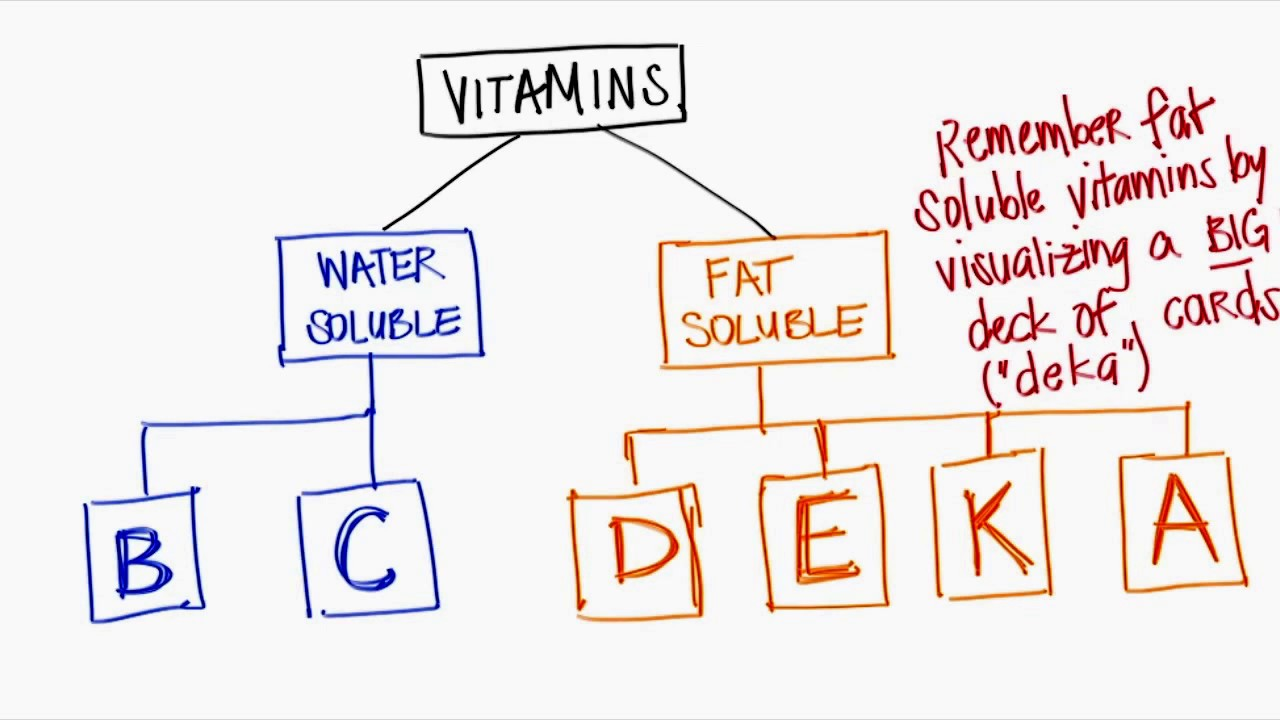
Micronutrients and Phytochemicals
Functional Roles of Micronutrients
Enzymes, coenzymes, and cofactors
Fluid and electrolyte balance
Antioxidant systems
Building bones
Energy metabolism
Blood health
Can Food Be Medicine?
Examples:
Scurvy: fatigue, bleeding gums, bruising
a disease caused by a deficiency of vitamin C, characterized by swollen bleeding gums and the opening of previously healed wounds, which mainly affected poorly nourished sailors until the end of the 18th century.
1753, James Lind, a British Navy physician found citrus fruit prevents disease
Rickets: bone disease in children
1922, cod liver oil an effective treatment
Vitamin D: promotes the body’s absorption of calcium and phosphorus
Extreme or prolonged lack of vitamin D makes it difficult to maintain proper calcium and phosphorus levels in bones, which can cause rickets.
Vitamins and minerals work together to perform various physiological functions
Chlorosis: green skin color, weakness
1700’s Physician Sydenham prescribed, “mineral water with the Iron”
Vitamins
Vitamins: carbon-containing substances needed in small amounts by the body
Vitamin content is most significant when a fruit or vegetable is ripe
Essential: can’t be synthesized by the body
Absence leads to a deficiency that can be cured if the vitamin is resupplied in time
Avoid intakes over the Upper Level (Megadose)
Fat Soluble Vitamins:
Vitamin A: Vision, Reproduction, Bone Health, Immune System
Vitamin D: Strengthens Bones, Calcium Absorption
Vitamin E: Immune System
Vitamin K: Blood Clotting, Bone Health
Absorbed with dietary fat
Anything interfering with fat absorption will impair fat soluble absorption
Fat Soluble Vitamins: Deficiencies
Vitamin-A: Night blindness, Dry eyes, Rough skin, Slower bone growth & Improper tooth development
Vitamin-D: Cancer, Rickets & Softening of the bones
Vitamin-E: Muscular weakness and Neurological Issues
Vitamin-K: Blood clotting and Reduces the bone density
Water Soluble Vitamins & Choline:
Thiamin (B1)
Riboflavin (B2)
Niacin (B3, PP)
Pantothenic acid (B5)
Biotin (B7, H)
Pyridoxine (B6)
Folate (folic acid, B9)
Cobalamin (B12)
Vitamin C
Absorbed primarily in the small intestine
Relatively high bioavailability
Transported to the liver via portal vein & distributed to body tissues
Water-soluble vitamins are particularly susceptible to destruction by heat, light, air exposure, cooking in water, and alkalinity

Vitamin Toxicity
Vitamin toxicity is most frequently from supplemental sources, not foods.
Toxicity by vitamin A most frequently observed.
Symptoms of Vitamin A toxicity:
Dry, itchy skin
Headache
Nausea
Blurred vision
Can cause severe birth defects
Minerals
Minerals: Individual chemical elements that can’t be broken down further
Majority of minerals absorbed in the small intestine
Higher fiber diets can lower the absorption of iron and zinc
Vitamin C intake increases iron absorption
Stored in various tissues
Some minerals remain in the bloodstream
Calcium, phosphorus, magnesium, and fluoride stored in bone
Iron, copper, and zinc are stored in the liver
Others are stored in muscle tissue, organs, glands
Essential when:
Dietary inadequacy causes physiological or structural abnormality
An addition to our diet reinstates health
Major minerals:
Sodium
Potassium
Chloride
Calcium
Phosphorus
Magnesium
Sulfur
Trace minerals:
Iron
Zinc
Selenium
Iodide
Copper
Fluoride
Chromium
Manganese
Molybdenum
Ultratrace minerals:
Arsenic
Boron
Nickel
Silicon
Vanadium
Micronutrients and Phytochemicals
Functional Roles of Micronutrients
Enzymes, coenzymes, and cofactors
Fluid and electrolyte balance
Antioxidant systems
Building bones
Energy metabolism
Blood health
Can Food Be Medicine?
Examples:
Scurvy: fatigue, bleeding gums, bruising
a disease caused by a deficiency of vitamin C, characterized by swollen bleeding gums and the opening of previously healed wounds, which mainly affected poorly nourished sailors until the end of the 18th century.
1753, James Lind, a British Navy physician found citrus fruit prevents disease
Rickets: bone disease in children
1922, cod liver oil an effective treatment
Vitamin D: promotes the body’s absorption of calcium and phosphorus
Extreme or prolonged lack of vitamin D makes it difficult to maintain proper calcium and phosphorus levels in bones, which can cause rickets.
Vitamins and minerals work together to perform various physiological functions
Chlorosis: green skin color, weakness
1700’s Physician Sydenham prescribed, “mineral water with the Iron”
Vitamins
Vitamins: carbon-containing substances needed in small amounts by the body
Vitamin content is most significant when a fruit or vegetable is ripe
Essential: can’t be synthesized by the body
Absence leads to a deficiency that can be cured if the vitamin is resupplied in time
Avoid intakes over the Upper Level (Megadose)
Fat Soluble Vitamins:
Vitamin A: Vision, Reproduction, Bone Health, Immune System
Vitamin D: Strengthens Bones, Calcium Absorption
Vitamin E: Immune System
Vitamin K: Blood Clotting, Bone Health
Absorbed with dietary fat
Anything interfering with fat absorption will impair fat soluble absorption
Fat Soluble Vitamins: Deficiencies
Vitamin-A: Night blindness, Dry eyes, Rough skin, Slower bone growth & Improper tooth development
Vitamin-D: Cancer, Rickets & Softening of the bones
Vitamin-E: Muscular weakness and Neurological Issues
Vitamin-K: Blood clotting and Reduces the bone density
Water Soluble Vitamins & Choline:
Thiamin (B1)
Riboflavin (B2)
Niacin (B3, PP)
Pantothenic acid (B5)
Biotin (B7, H)
Pyridoxine (B6)
Folate (folic acid, B9)
Cobalamin (B12)
Vitamin C
Absorbed primarily in the small intestine
Relatively high bioavailability
Transported to the liver via portal vein & distributed to body tissues
Water-soluble vitamins are particularly susceptible to destruction by heat, light, air exposure, cooking in water, and alkalinity

Vitamin Toxicity
Vitamin toxicity is most frequently from supplemental sources, not foods.
Toxicity by vitamin A most frequently observed.
Symptoms of Vitamin A toxicity:
Dry, itchy skin
Headache
Nausea
Blurred vision
Can cause severe birth defects
Minerals
Minerals: Individual chemical elements that can’t be broken down further
Majority of minerals absorbed in the small intestine
Higher fiber diets can lower the absorption of iron and zinc
Vitamin C intake increases iron absorption
Stored in various tissues
Some minerals remain in the bloodstream
Calcium, phosphorus, magnesium, and fluoride stored in bone
Iron, copper, and zinc are stored in the liver
Others are stored in muscle tissue, organs, glands
Essential when:
Dietary inadequacy causes physiological or structural abnormality
An addition to our diet reinstates health
Major minerals:
Sodium
Potassium
Chloride
Calcium
Phosphorus
Magnesium
Sulfur
Trace minerals:
Iron
Zinc
Selenium
Iodide
Copper
Fluoride
Chromium
Manganese
Molybdenum
Ultratrace minerals:
Arsenic
Boron
Nickel
Silicon
Vanadium
 Knowt
Knowt
